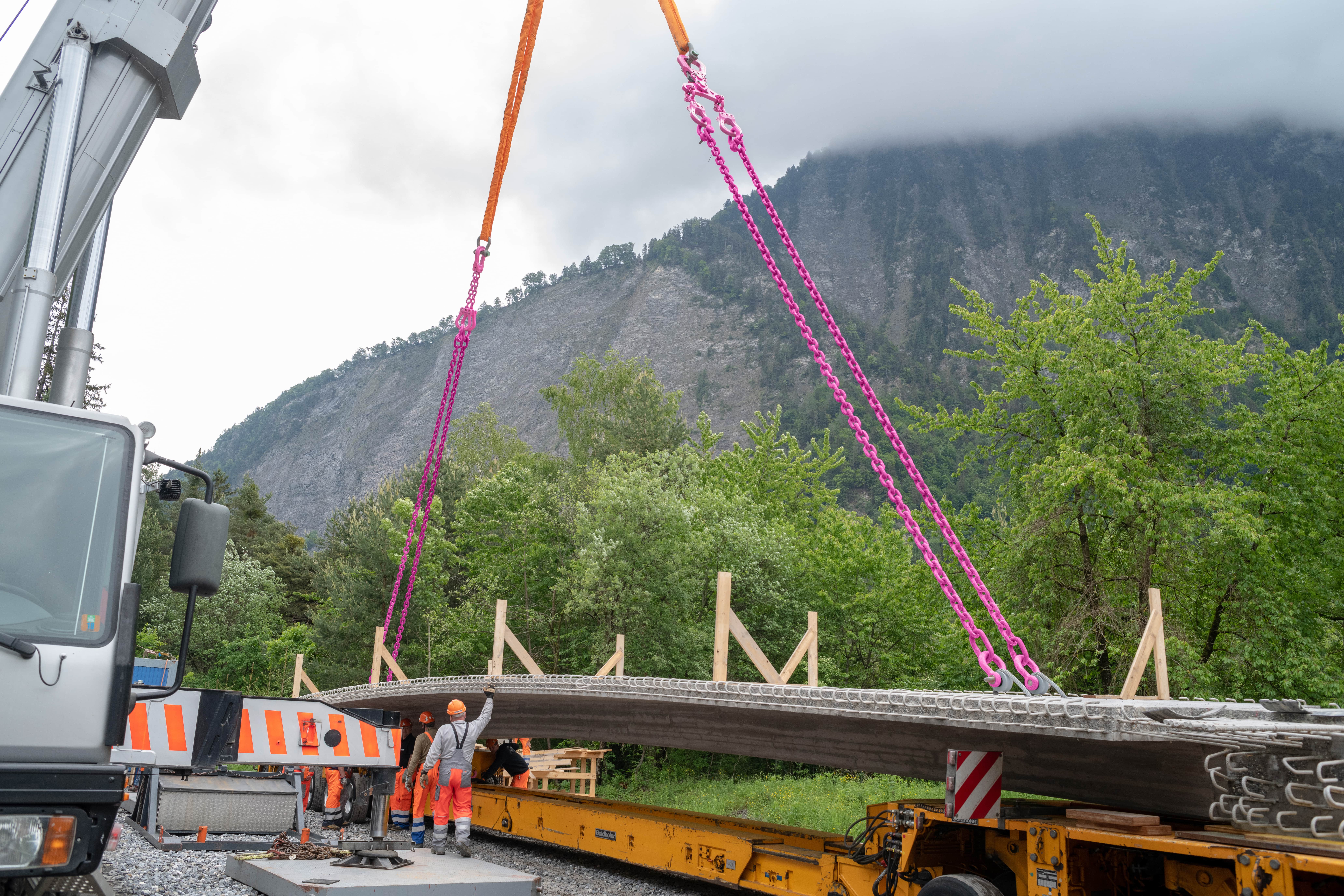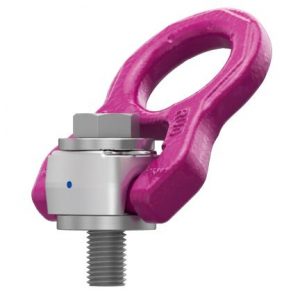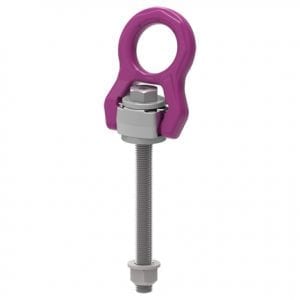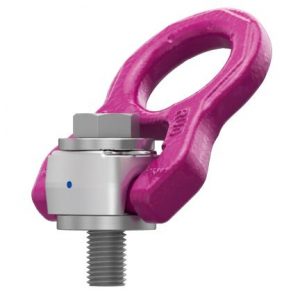
Engineering
A flying bridge
Challenges & Solutions from loading to installation
It is a rare sight when a large bridge is slowly suspended in mid-air before being fixed into place. A task that looks so simple is in fact the result of a very detailed planning process combined with the use of high-tech equipment. The RUD team faced very specific challenges throughout all aspects of the project from loading to installation.

The Challenge:
The Bridge elements consisted of precast concrete. The challenge being, the large elements were a length of around 20 metres, a width of around 4 m and a total weight of approximately 88 metric tons. Despite their large stature they were very thin, making them extremely fragile, resulting in the need for a specific lifting plan with the use of very sophisticated technology.
The four, permanently defined attachment anchors in the concrete were only designed for a maximum load of 25 metric tons. If the load were any heavier, they would be ripped out. This meant that even load distribution was paramount. Calculations were necessary to guarantee this: the maximum lifting angle was restricted to 7°. For this purpose, each lifting cable had to be 18 m long and so the typical method on the basis of chains would have been challenging and costly. For this reason, the system had been additionally supplemented by round slings.
RUD specialists tackled the issue with the following solution: using a compensation adapter for round slings to transport the 88 metric tons and connect grade 10 shackles, engineers designed a short 2×2 VIP MAXI 28 mm chain system with a rocker element and four IB links.




